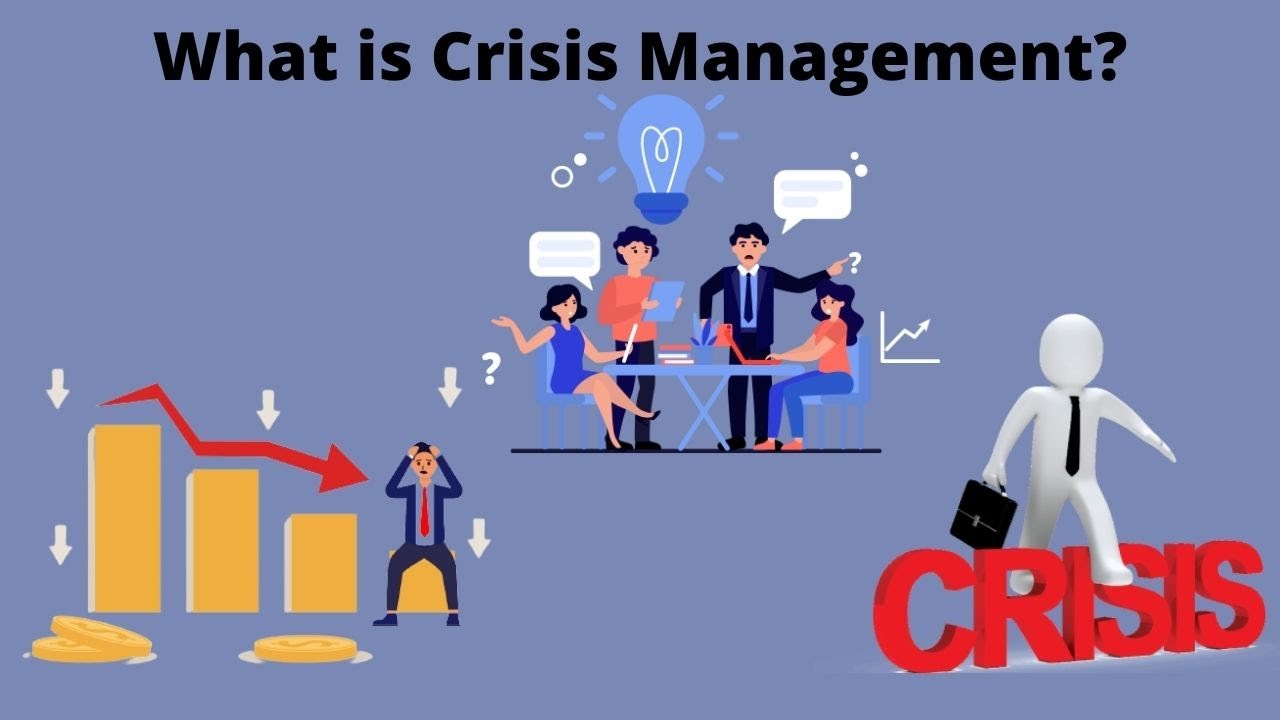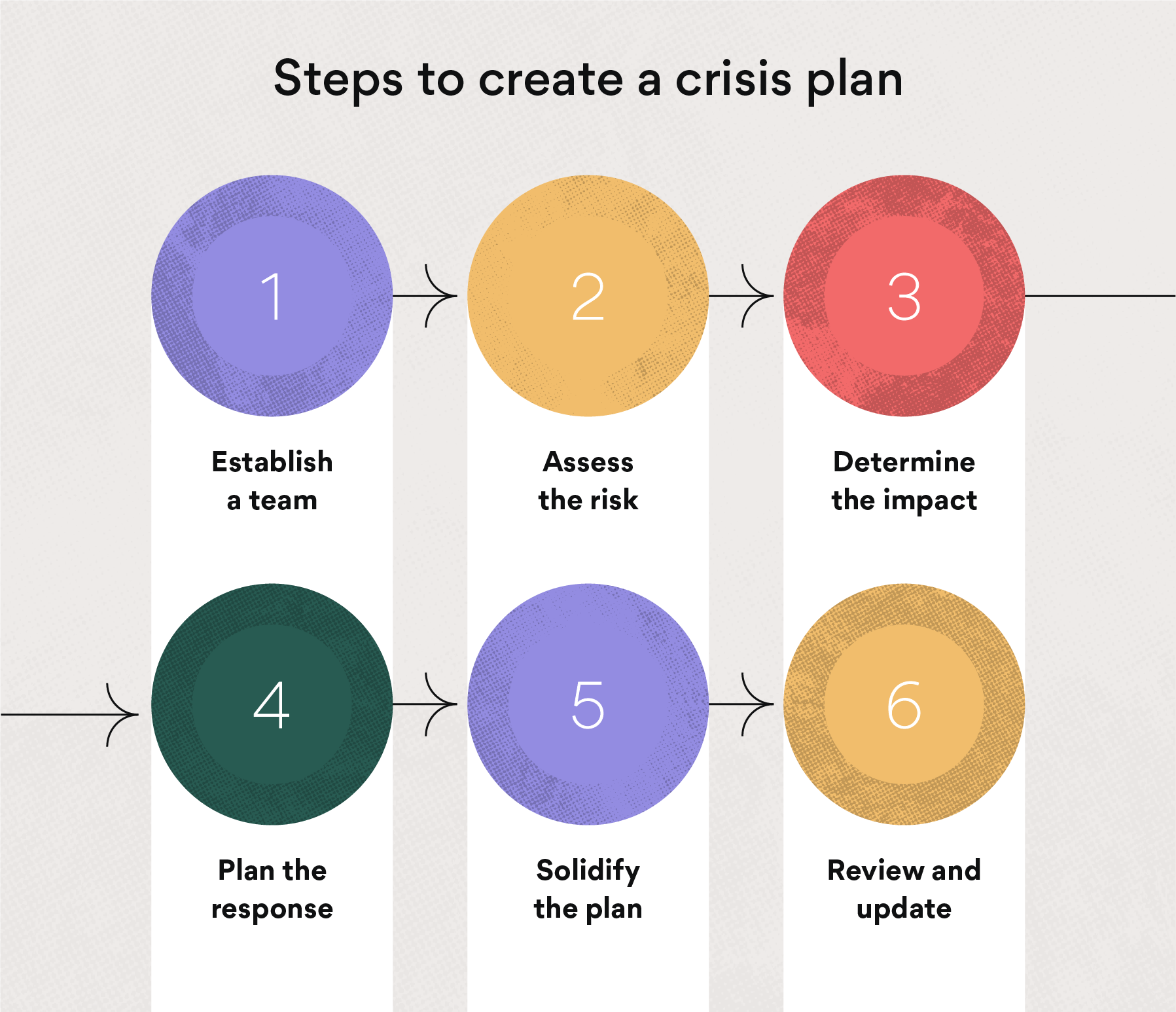Any firm, big or little, may come into issues that disrupt routine operations.An office fire, a CEO's death, a terrorist attack, a data breach, or a natural catastrophe may all result in lost sales, reputation harm, and lost money.
Businesses that prepare for unexpected eventsmight lessen the impact of a bad incident.Crisis managementis the process of creating a company continuity strategy in case of a crisis.
Most companies begin by analyzing their business' risk.Risk analysis is the process of identifying potential negative outcomes and determining their probability.A risk manager may estimate the likelihood of a danger happening in the future, the best and worst case outcomes, and the resulting harm to the firm by using simulations and random variables using risk models like scenario tables.
Until businessmay be temporarily slowed while new computer equipment is purchased, activities will not be entirely stopped.In the event of a crisis, an organization and its stakeholders may prepare and adapt.

What is Crisis management? What is Crisis? Crisis Management Plans.
What Is Crisis Management
Crisis management aids an organization and its stakeholders in identifying dangers and mitigating them.It requires diagnostic, alertness, and action – frequently in a hurry.Quick and firm decisions are required.For now, all you and your business can do is prepare ahead.
Making a strategy for a crisis involves anticipating the unpredictability of global events and the dependability of your company.In summary, a good crisis plan anticipates the unexpected.
No company is safe from a crisis.The vulnerabilities of any business, from little mom-and-pop shops to Fortune 500 firms, may erupt into a full-blown catastrophe under the right (or wrong!) conditions.
Natural disasters, data breaches, terrorism, and now a lethal epidemic are all examples of crisis.Damage to property or lost sales are material expenses to the organization.Intangible expenses like reputational harm might take years to repair.Prepared organizations overcome catastrophes.
The Purpose And Importance Of Crisis Management
When faced with a crisis, a company must act fast yet cautiously in order to avoid exacerbating any existing harm or losing control of the narrative.Millions of dollars in sales, stock price movements, and/or earned publicity may be at stake whether a company's reaction is planned or unplanned.
When it comes to crisis management, the most important things are:
- Inform the general population about the current situation in a straightforward and confident manner.
- With meticulous fact-checking before to becoming public, respond as truthfully as possible.
- Any information pertaining to the public's health and safety, such as a product recall, should be communicated.
- Utilize any and all of your target audience's preferred methods of contact, including email and social media.
- Create a story that shows an organization is operating in the best interests of the community.
- For the sake of team cohesion, adhere to any crisis management strategies in place.
- Use what you've learned from previous instances to predict and prepare for future ones.
6 Steps To Create A Crisis Management Plan
Breaking down a crisis management strategy into smaller, more manageable parts is the best way to get it done quickly and successfully.You'll be able to see the most probable dangers without being paralyzed by the enormity of the problem.Use a crisis management template with the following six phases to arrange your plan.
Identify Your Crisis Leadership Team
Choosing a group of leaders with whom to work on crisis management preparations is a prerequisite before you can even begin.People who will take action in the event of a crisis should be included in your team members.As early in the crisis management planning process as possible, assemble this team to ensure that everyone is familiar with your crisis approach.
Determine The Degree Of Danger
Have a brainstorming session to examine the potential hazards that your organization may encounter as a starting point for the planning process.In order to get your brainstorming session off to a good start, take a look at the risks associated with your profession.
Analyze the likelihood of hazards arising by using a risk registerIt is possible to avoid delays and be prepared for unexpected setbacks by keeping a risk registry.Additionally, it can assist you in visualizing the dangers that are most likely to occur, allowing you to devise a strategy to deal with them.
Identify The Ramifications For Business
With the help of your crisis leadershipteam, assess the business impact of the high-probability risks you've identified.It's important to look at each risk individually because it can lead to different outcomes.Regulatory penalties or customer attrition are only a few of the possible consequences for a company's operations.
Plan The Response
Take each risk you've identified and figure out what your team needs to do if it comes to fruition. Then, take action.A cyberattack might need the hiring of a security expert, a public relations specialist, and an assessor of the harm to the company's reputation.
Strengthen The Strategy
Finally, put into writing what you've learned from talking about dangers your company may face as well as what your organization's business effect will be.There is more to a crisis management plan than just a written or verbal outline of steps.We'll go into greater depth about activation procedures and emergency contacts in the next sections.This also necessitates coordinating with key stakeholders to ensure that everyone is on the same page as far as the next steps are concerned
Re-examine And Re-adjust
Check to see if there are any holes in your crisis plan after it has been finalized.At the very least, review and update your crisis management strategy once a year, since threats might evolve over time.
Conclusion
There is a lot of information on crisis management that can't be condensed into a single blog post.Researchers and analysts in crisis management have done a great deal of work to come up with the finest techniques and lessons.
Effective crisis management may limit the damage and in some cases enable an organization to emerge stronger than before the crisis occurred.The best approach to enhance a company is not via crises, though.
However, no organization is exempt from a crisis, and as a result, everyone must do their part to be ready for one when it occurs.A successful crisis management program may combine many of the concepts in this post.
This article concludes with a list of sources, each annotated in its own paragraph.Key literature in crisis management is highlighted in the annotated bibliography.Using the citations provided in each item, you may easily identify the sources for each subject.
